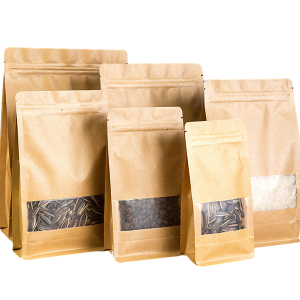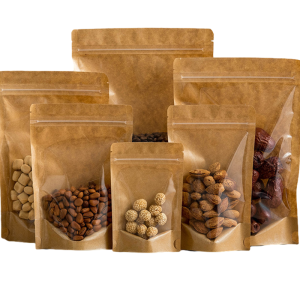Sustainable Packaging: An Overview of Compostable and Biodegradable Stand Up Pouches
Introduction
Stand up pouches have become a popular packaging format across many industries due to their lightweight, convenient design. However, most standard pouches are made from plastic-based materials that end up in landfills. Compostable and biodegradable pouches provide a more sustainable solution. Let’s take a closer look at how these innovative pouches can reduce waste and drive forward environmentally-friendly packaging.
What are Stand Up Pouches?
Basic Features
Stand up pouches are vertically sealed bags that can stand upright on their bottom gusset. They are made from flexible composite materials laminated together. This often includes plastic films like polyethylene or metalized coatings.
Common features of stand up pouches:
- Durable and lightweight
- Resealable zipper closures
- Flat or gusseted bottoms
- Ability to stand upright
- No external framework needed
Common Uses
Stand up pouches are versatile and used across many industries:
- Food: Sauces, dairy, cereals, baked goods, snacks
- Beverages: Wine, juice, water, iced coffee
- Personal care: Shampoo, soaps, cosmetics
- Homecare: Detergents, cleaners, pet food
- Pharma: Medical supplies, powders, liquids
Benefits of Compostable and Biodegradable Pouches
Switching to compostable or biodegradable pouches provides several advantages:
Reduce Waste
Compostable materials break down quickly in industrial composting facilities. Biodegradable pouches can decompose in landfills or the natural environment. Both options are better than conventional plastic pouches that remain intact for years.
Eco-Friendly
Sustainable pouches have a reduced carbon footprint compared to plastic bags. Most are made from renewable plant-based materials like PLA instead of fossil fuel-derived plastics.
Cost Effective
Though pricier upfront than plastic films, compostable pouches can drive savings through waste reduction. Some companies even pursue reusable pouch models to maximize value.
Types of Sustainable Pouches
There are a few common polymers used to create compostable and biodegradable packaging:
PLAs
Polylactic acid (PLA) is made from plant starches like corn, cassava, or sugar cane. PLA can be composted industrially or is biodegradable under the right conditions.
PBATs
Polybutylene adipate terephthalate (PBAT) is an alternative bioplastic derived from adipic acid and butanediol. It is more flexible than PLA.
Starch Blends
Some pouches blend PLA or PBAT with starch from crops like potatoes, rice, or wheat. Starch improves moisture resistance and biodegradability.
Applications and Limitations
Food Packaging
Compostable pouches are well-suited for food items. However, barriers are needed to prevent moisture loss and oil leakage. Multilayer lamination provides the necessary performance.
Non-Food Packaging
For non-edible products like homecare items, single layer compostable pouches may suffice. But water sensitivity can still be a concern.
Temperature Sensitivity
PLA, PBAT, and starches compromise at higher temperatures. Pouches made from these bio-based materials cannot withstand boiling water temperatures.
Certifications and Standards
Compostability Certifications
Certifications confirm a product’s ability to biodegrade in a commercial composting facility:
- BPI (Biodegradable Products Institute)
- Compostable (TUV Austria)
- OK Compost (Vinçotte)
Biodegradability Standards
Standards for biodegradability include:
- ASTM D6400 (US standard)
- EN 13432 (European standard)
Both ensure packaging can decompose in the natural environment like soil, water, or landfills.
Innovations and Trends
The sustainable pouch market continues to evolve through new material innovations and design concepts:
Multilayer Structures
Co-extruded multilayer pouches combine properties like oxygen barriers, strength, and compostability into one pouch.
Smart Packaging
Embedded sensors can monitor oxygen, moisture, or integrity of compostable pouches and alert end users.
Reusable Pouches
Durable, reusable pouch systems focus on recyclability and refillability rather than biodegradability.
Conclusion
Compostable and biodegradable stand up pouches provide an eco-friendly alternative to conventional plastic pouches. Materials like PLA and PBAT offer the durability and performance needed for many applications. Continued innovation will drive improved functionality and expand sustainable packaging across more industries. Choosing compostable or biodegradable pouches demonstrates a commitment to reducing environmental impact.
FAQs
Q: Are compostable pouches waterproof?
A: Compostable pouches provide moisture resistance but are not entirely waterproof, especially at higher temperatures. Multilayer structures help increase water resistance.
Q: Can you microwave compostable pouches?
A: Most compostable pouches should not be microwaved since the heat can distort or melt the pouch. Remove any food items from the pouch before microwave heating.
Q: Do compostable pouches require special handling?
A: Compostable pouches should be disposed of in designated composting bins, not standard recycling streams. Store and transport compostable pouches away from excessive heat, moisture, or humidity.
Q: How long do compostable pouches take to break down?
A: In actively managed industrial composting facilities, compostable pouches take 2-3 months to biodegrade. In backyard compost piles or landfills, the process may take 6 months or longer.
Q: Can compostable pouches be made with zipper closures?
A: Yes, zipper closures made from compostable materials like PLA can be incorporated into stand up pouch designs to maintain resealability.
Q: Do compostable pouches keep food fresh?
A: Properly formulated compostable pouches provide comparable shelf life to conventional packaging. Moisture barriers and modified atmosphere technologies help maintain food freshness.







Leave A Comment